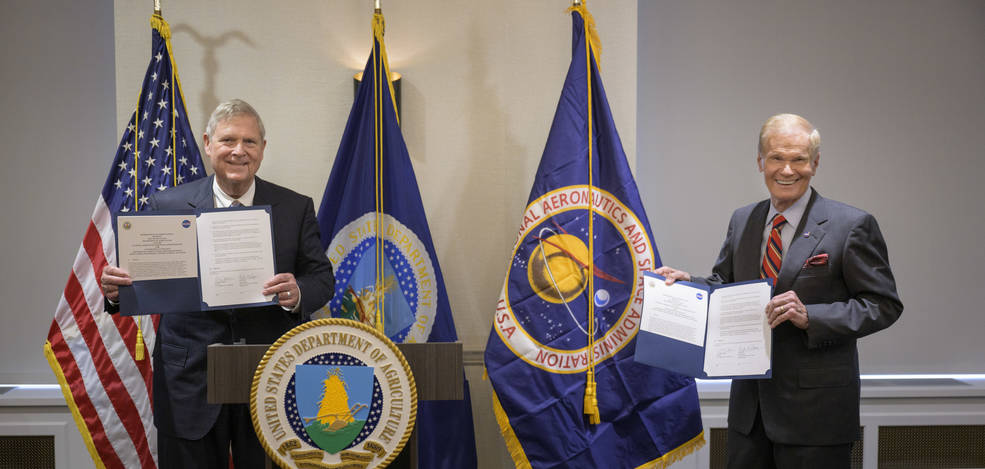
NASA and the U.S. Department of Agriculture (USDA) have recently strengthened their collaboration through the signing of a memorandum of understanding. This agreement aims to enhance agricultural and Earth science research, technology, agricultural management, and the application of scientific data and models to agricultural decision-making.
The partnership between NASA and the USDA focuses on promoting education, communication, and outreach activities, particularly targeting the youth in America. The goal is to inspire and encourage them to pursue careers in STEM and agriculture. This collaborative effort will build upon NASA’s Bridge Program, which fosters workforce development partnerships with higher-education institutions, including Tribal and Minority Serving Institutions. Additionally, it will leverage the USDA’s newly launched NextGen program, an initiative that invests $262.5 million to cultivate a diverse generation of professionals in food and agriculture.
The Administrator of NASA, Bill Nelson, emphasized the significance of this partnership, stating, “From the heavens to the Heartland, NASA and the Department of Agriculture are reaffirming our commitment to getting essential data in the hands of America’s farmers and preparing future generations to lead and strengthen America’s agriculture industry.” He also emphasized the importance of NASA’s Earth observation data in developing climate-resilient food systems and sustainable farming practices in the face of a changing climate.
The collaborative efforts between NASA and the USDA will extend beyond Earth and explore opportunities to improve crop performance to meet both Earth-based and space-based goals. This includes supporting NASA’s Artemis program, which aims to land the first woman and the first person of color on the Moon, as well as establishing long-term lunar exploration in preparation for human exploration of Mars.
U.S. Secretary of Agriculture Tom Vilsack expressed his appreciation for the partnership, recognizing the critical connections between global food security, climate change, and space exploration. He stated, “We recognize the critical interface between planet-wide food security, climate change, and space, and together we are advancing cutting-edge innovation, research, and workforce development to tackle some of Earth’s greatest challenges.”
The collaboration between NASA and the USDA in space exploration involves plant-related research conducted on the International Space Station and other space and ground platforms. These efforts have resulted in innovative approaches to improve agriculture, protect the environment, and enhance human health.
This memorandum of understanding builds upon the partnership that began between the USDA and NASA in 2015. Examples of recent joint efforts include sending young individuals to NASA Space Camp to learn STEM applications and partnering to develop Crop-CASMA, an online tool that utilizes soil data to track droughts, floods, and forecast agricultural yields. Another noteworthy collaboration involves the development of a hyperspectral imaging system by USDA’s Agricultural Research Service (ARS) and NASA scientists. This system aims to monitor plant health in space, particularly for crops intended for consumption during space missions.
Overall, the strengthened partnership between NASA and the USDA highlights their shared commitment to leveraging scientific advancements and technology for the benefit of agriculture, Earth science, and space exploration.
Image Source: NASA